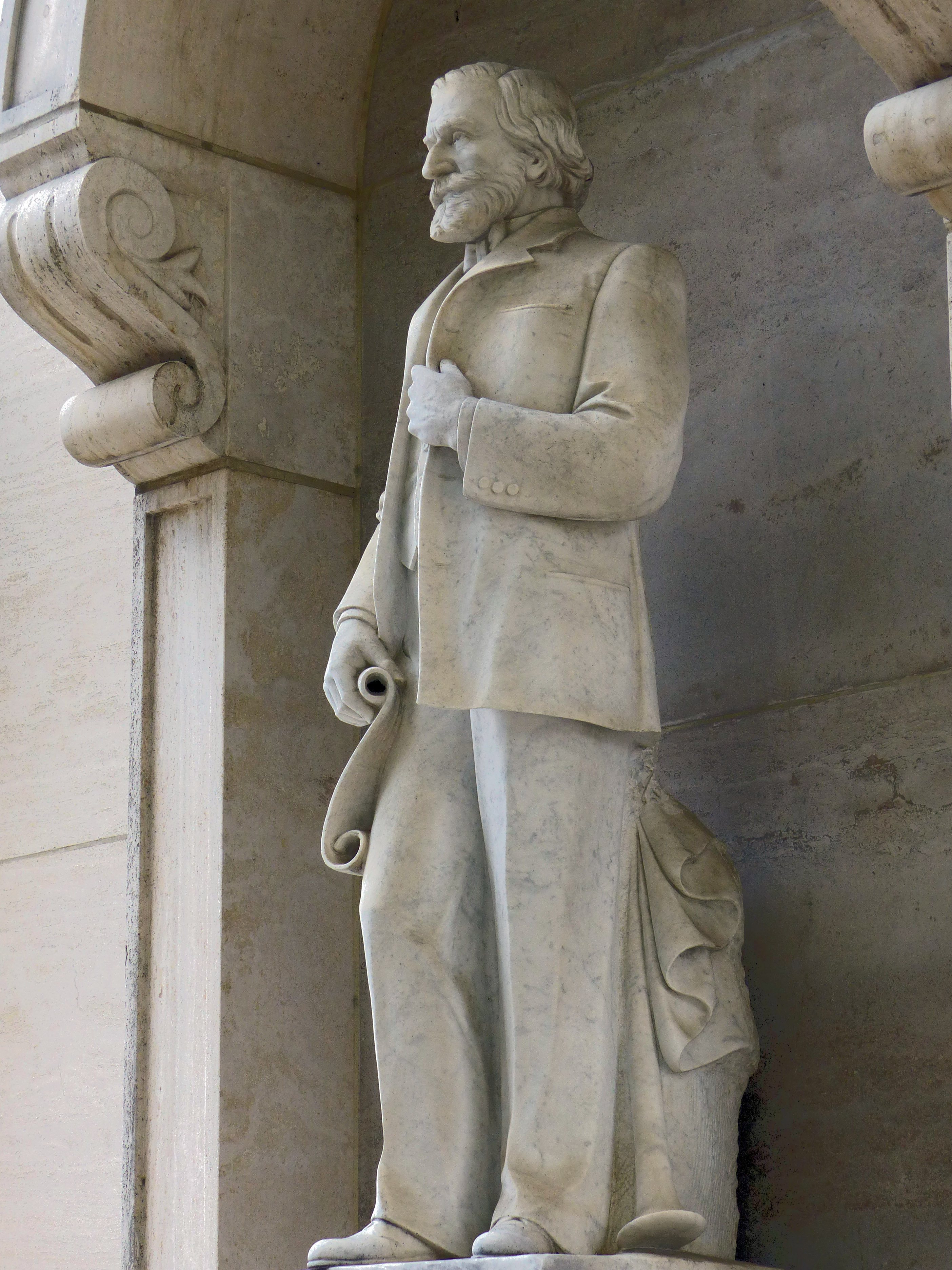The Sculpture Studios of Italy
by James M. Goode
from Washington Sculpture 2008. Page 254.

One of the oldest and most famous stone-carving studios in Carrara, Italy, is Nicoli Sculpture Studios. It was founded by Carlo Nicoli in 1863 and continues in operation today under the direction of Christiana Nicoli. The studio is located in an enormous old building, about 100 feet long and 40 feet tall, in the heart of Carrara. The floor is composed of white marble dust, which has been compacted over the last century. On the shelves, which are 6 to 10 feet tall, are hundreds of plaster statues of both allegorical and real figures. Here one can find a likeness of the Angel of Victory or a slave girl or Napoleon or Caesar. Even the Twelve Stations of the Cross can be ordered by any Catholic church in the world.
Statues are produced there today in the same manner as they were a century ago. Usually the sculptors model the plaster statues and the carvers, using a pointing machine, carve the copies in marble for the customer. The only difference is that power tools came into general use in the 1920s. In addition to the power chisel, different attachments, such as a brush hammer, can be used. This is used by a specialized and highly talented carver known as a degrosser, who roughs out a virgin block of marble. He cuts down one-third of a block of marble to within an inch of where the carver will start carving the statue.
Often have the sculptors and carvers attended one of the schools located in Carrara or the nearby town of Pietrasanta. Both towns have been in operation for 2,500 years as centers for marble quarrying and marble carving. They are located along the coast between Pisa and Genoa. Most of ancient Rome was built with marble from these two towns, which was shipped by water. When shipping marble from Pisa became difficult because of silting, the English built the port of Livorno (Leghorn in English) in the eighteenth century. Other well-known schools are located in both Lucca and Florence.
The nineteenth century was the golden age for the Carrara studios because of the world-wide demand for sculpture to embellish the fashionable Beaux-Arts public buildings in Europe, in America, and around the world. There were over 180 stone-carving studios in operation in Carrara at that time. They ranged in size from ones with two or three family members to ones with several hundred carvers. Usually the carvers specialized in either figurative or architectural carving. The latter would include Neoclassical columns, capitals, garlands, medallions, and other marble facade decorations. Many of the figurative carvers would specialize in drapery, facial features, hands, or other details. Thus several carvers often worked on one statue. Some sculpture studios only executed bas-relief panels.
Today these studios often produce marble facades for entire buildings worldwide. They precisely cut the thin stone panels with water jets using state-of-the-art computers. Various large studios maintain their “deposits,” which are stone yards where stone blocks are stored and usually stacked three blocks high. A client can select stone blocks from India, China, Canada, North Carolina, Norway, Brazil, or Egypt. The Italian marble in the deposits comes mainly from the provinces of Tuscany and Liguria. Most stone today is shipped from Carrara, Genoa, La Spezia, or Livorno.